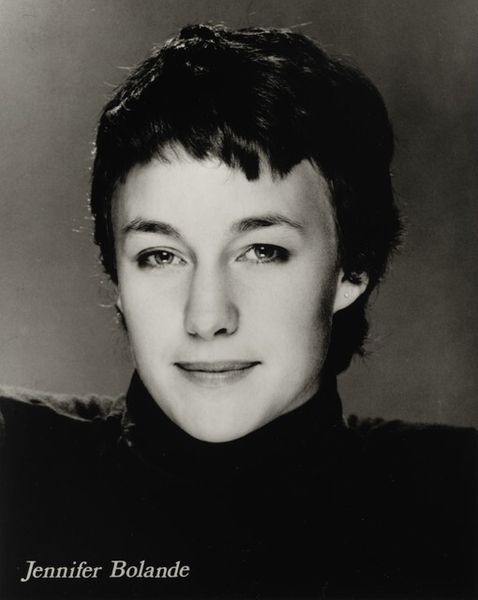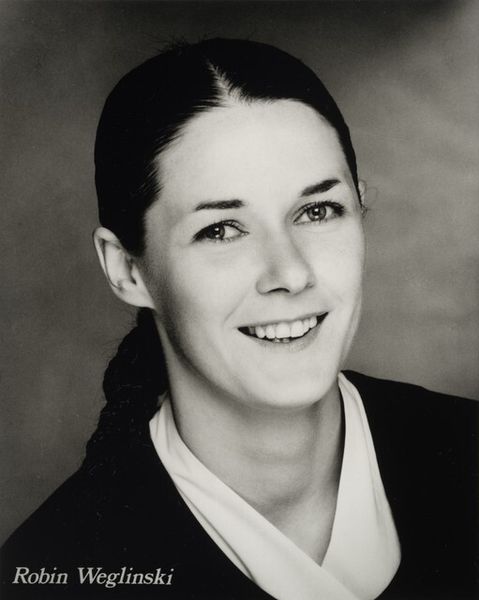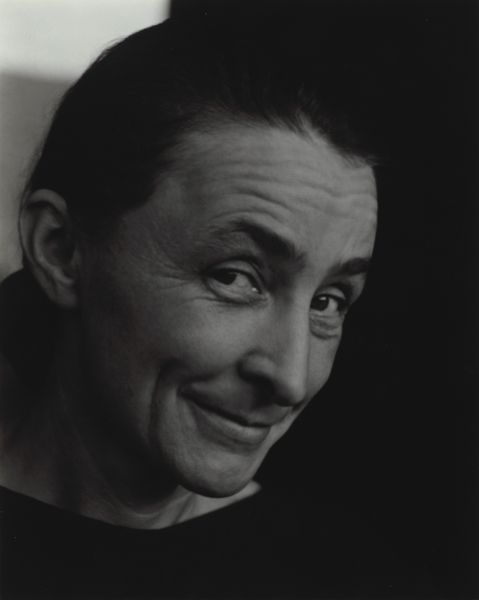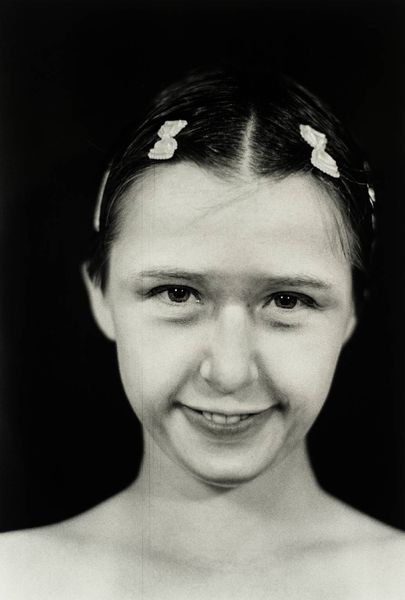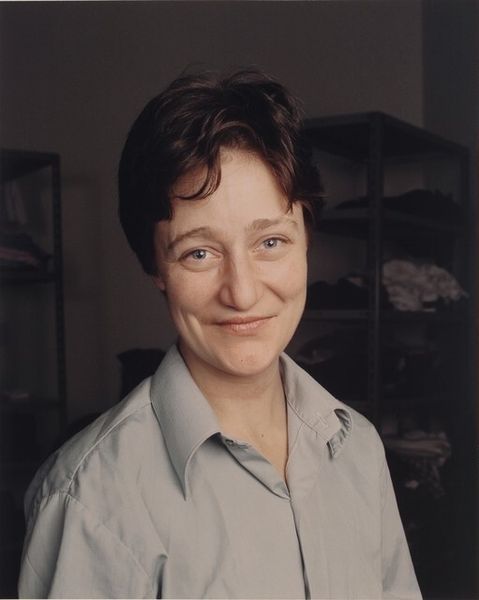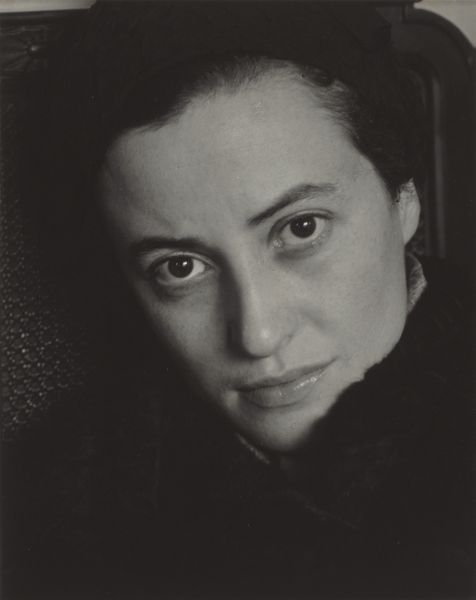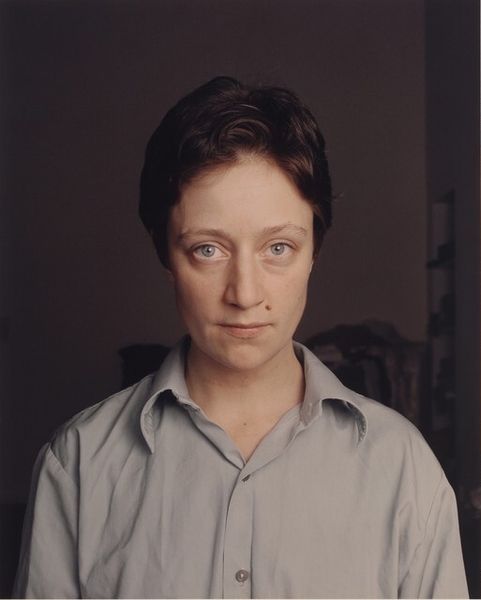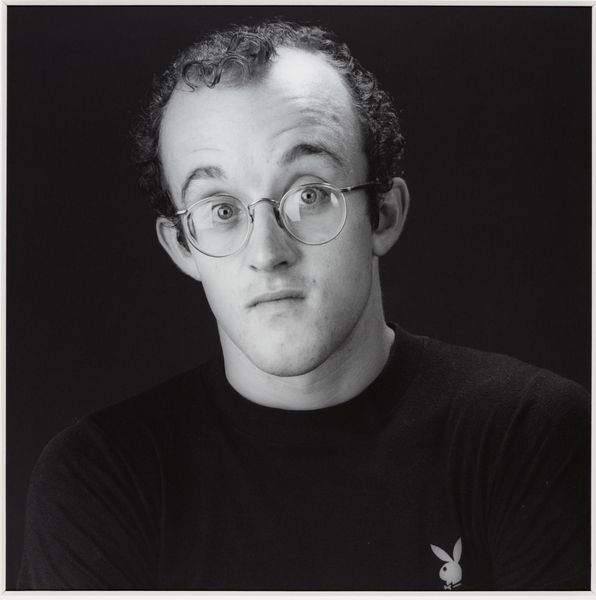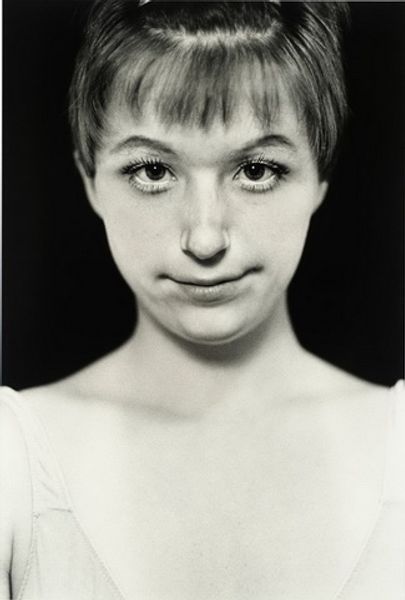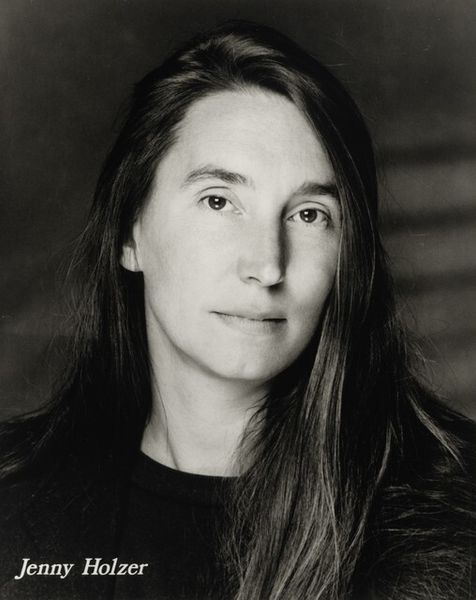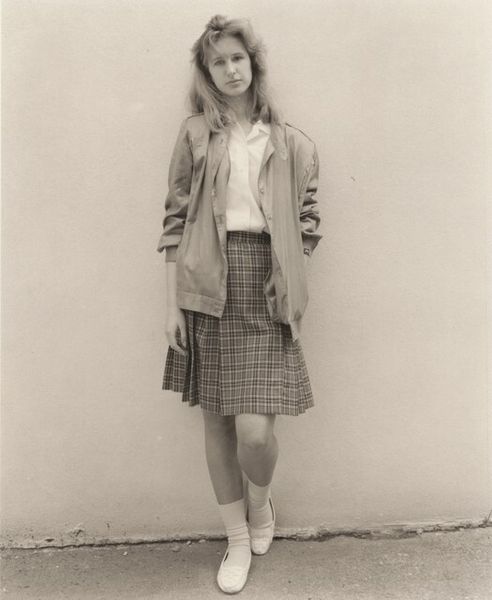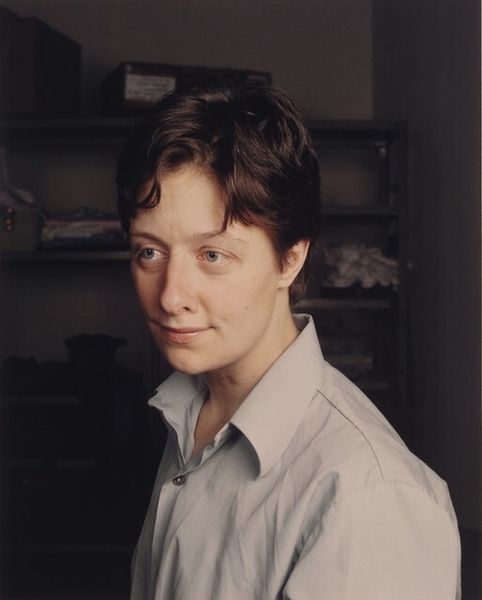
photography
#
portrait
#
self-portrait
#
low key portrait
#
portrait image
#
portrait
#
portrait subject
#
photography
#
portrait reference
#
single portrait
#
facial portrait
#
fine art portrait
#
celebrity portrait
#
digital portrait
Dimensions: image/sheet: 25.4 × 20.32 cm (10 × 8 in.) framed: 27.31 × 22.23 cm (10 3/4 × 8 3/4 in.)
Copyright: National Gallery of Art: CC0 1.0
Editor: Here we have a self-portrait of Cindy Sherman from 1986, simply titled "Cindy Sherman," created using photography. It's strikingly direct, and her smile almost feels like a challenge. What historical context should we consider when looking at this piece? Curator: Given the timeframe, consider the evolving role of photography within the art world, alongside second-wave feminism. Sherman directly confronts how women have been represented and objectified in visual culture. What societal norms do you think she’s pushing against, and how do you think her role as both photographer and subject changes the dynamic? Editor: I think she's critiquing the male gaze and maybe challenging stereotypical roles assigned to women by mass media, but her agency here is complex. Is she truly in control, or is she also trapped within the same system she seems to critique? Curator: Exactly! And it’s crucial to see how institutions – galleries, museums, art history itself – play into perpetuating or challenging these representations. The image functions both as a document and a constructed fiction. The “real” Cindy Sherman remains elusive. Can we really separate the constructed persona from the artist herself, especially when her fame stems from performing such roles? Editor: So, is the "authentic self" even achievable within this performative framework that mass media demands, or are we all always acting in some way? That’s an unsettling thought, particularly within our own heavily mediated environment. Curator: Precisely. And what about the audience? Sherman forces us to question our own complicity in consuming these images and reinforcing cultural norms. Perhaps this work is less about unveiling Cindy Sherman, and more about revealing the audience’s presumptions about female identity. It really puts things into perspective, right? Editor: It does. I initially only considered the image itself, but its relationship with both the artist and its viewer paints a wider and deeper picture of art history. Thanks for broadening my understanding of her artistic approach.
Comments
No comments
Be the first to comment and join the conversation on the ultimate creative platform.
